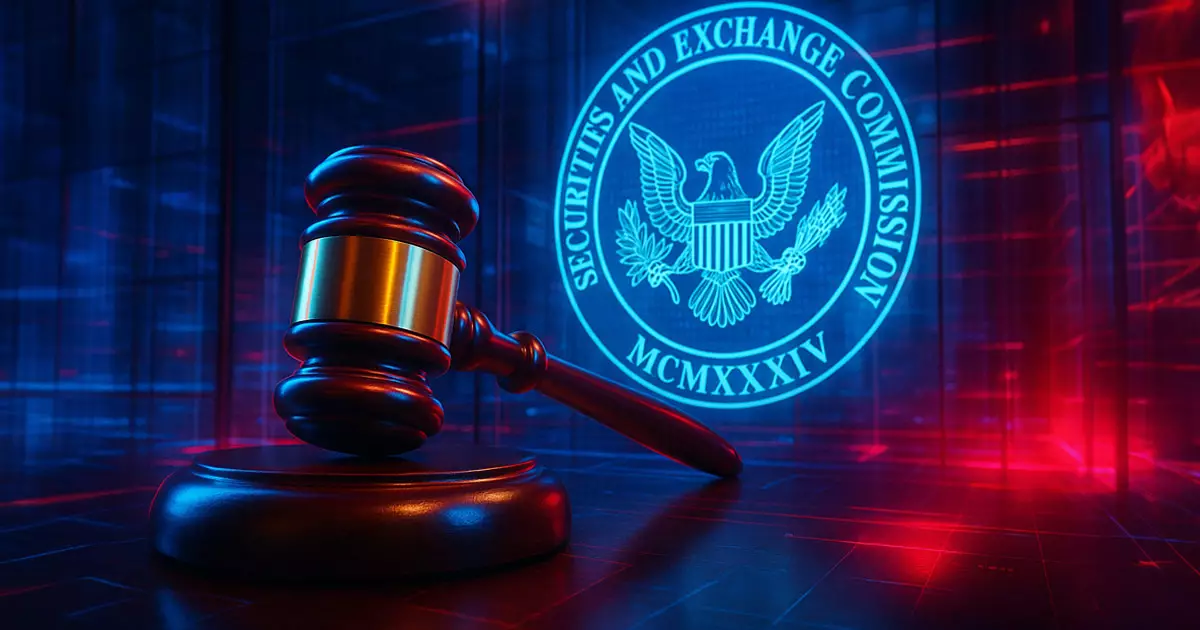In the rapidly evolving world of decentralized finance (DeFi), the demand for clear regulatory frameworks has never been more pressing. The DeFi Education Fund (DEF) has proposed five core principles to the Securities and Exchange Commission (SEC), seeking a “token safe harbor” to foster innovation while also ensuring that regulatory bodies have the necessary guidelines in place. Given the current ambiguity surrounding digital assets, the suggestion for a temporary exemption for token projects transitioning towards decentralization is one that merits serious consideration. However, it also raises crucial questions about the regulatory landscape and how effectively it can adapt to technological advancements.
Proactive Policy-Making: A Balancing Act
One of the compelling aspects of DEF’s proposal is its focus on a technology-agnostic approach. This understanding is critical—by avoiding favoritism towards certain blockchain models, the SEC can encourage a more diverse range of innovations. A major pitfall of regulatory frameworks is becoming mired in the specifics of existing technologies; doing so often stifles the creativity necessary for groundbreaking advancements. However, while DEF rightly advocates for flexible regulations, the challenge lies in developing a framework that addresses risks without becoming overly prescriptive.
The proposal indicates that the safe harbor should be inclusive, allowing a variety of projects designed to decentralize to qualify. This is a welcome stance considering how often nascent technologies can be overlooked simply because they do not fit neatly into existing regulatory categories. By offering room for evolution and recalibration, a broader eligibility criterion can facilitate an inclusive ecosystem that can adapt to technological maturation.
Transparent Disclosure: Bridging Trust and Innovation
The emphasis on disclosure requirements is equally noteworthy; the DEF advocates for information that balances the need for transparency with the practical limitations faced by early-stage development teams. While it’s vital for investors to have access to material information, the complexities inherent in DeFi projects often mean that early disclosures can be misleading or insufficient. DEF’s recommendations for source code transparency and governance structures represent a critical stride towards creating a culture of accountability.
However, the reliance on periodic disclosures may seem like an added layer of bureaucracy. It is here where a nuanced approach is required—pushing for transparency without overburdening teams. Streamlined compliance processes, perhaps through automation techniques, could be key in marrying these two needs. The proposed measures could resonate particularly well in a sector where agility is as essential as compliance.
Defining the Exit Criteria: A Roadmap for Decentralization
At the heart of DEF’s proposal is the concept of an “Exit Test,” which would signify when a project has sufficiently decentralized to no longer be classified as a security. This is an essential metric that could shape the future compliance landscape for DeFi. However, the criteria of this Exit Test—which reportedly include maximum transparency and the distribution of economic authority—must be carefully constructed. A rigid or overly ambitious framework could inadvertently unsettle the innovation that these projects aim to achieve.
The proposed three to four-year timeline for projects to meet these benchmarks is reasonable, allowing for adequate maturation without suffocating them with unrealistically short compliance windows. This flexibility is integral, as innovation often involves iterative experiments that require time to flourish.
Protecting the Market: A Digital Ecosystem’s Backbone
Perhaps most striking is DEF’s focus on the potential consequences for secondary market participants during the safe harbor period. Exempting intermediaries like digital asset exchanges from stringent regulations could reduce the legal ambiguity currently plaguing the trading of decentralized assets. This recommendation acknowledges that while regulation is essential, overbearing restrictions could inadvertently hinder growth.
Yet, this also raises concerns around investor protections and market integrity. The regulatory framework must not only facilitate innovation but also safeguard participants from possible market manipulation and malfeasance often seen in less regulated environments.
The Urgency for Congressional Legislation
While the DEF rightly emphasizes the need for a well-structured safe harbor to protect stakeholders during the regulatory lull, it cannot overlook the long-term need for comprehensive legislation from Congress. Temporary measures may bring short-term relief, but only robust, thoughtful statutes will provide the durable legal clarity necessary for sustainable growth.
In the end, the conversation around digital assets must expand beyond reactive measures and push for proactive, well-defined norms that can carry the DeFi movement into mainstream acceptance without compromising its foundational values of transparency and democratization.

